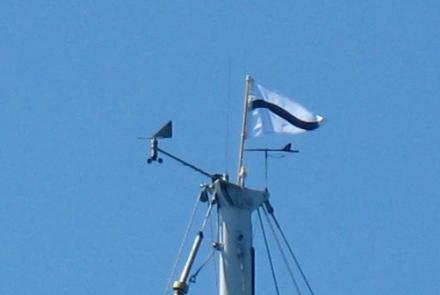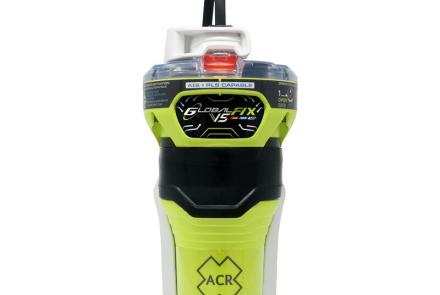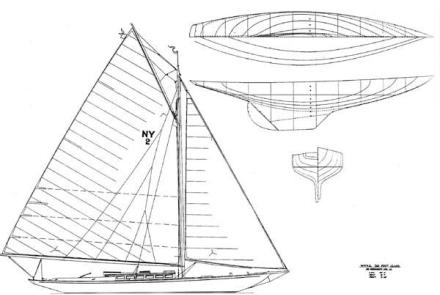Review of Electronic Personal Safety Devices
Introduction:
Man Overboard Rules of Safety
-
Rule No. 1. DO Not Fall Overboard. When sailing at night, in bad weather, when reefed, alone, or in cold waters, the best safety is to be clipped in and stay with the boat.
- Rule No. 2. DON'T forget Rule No. 1.
Background:
In preparation for a trip to the far reaches of Baffin Island on a 46' sailboat, I wished to explore personal safety devices that were coming available in the unlikely (and undesirable) event I found myself overboard. I was aware of personal locator beacons (PLB's), AIS-based devices, and the Spot type reporting devices. What were the alternatives, practicalities, and costs.
The key criteria for me are:
1. How do you know someone has gone overboard?
2. How quickly can assistance be rendered? And by whom?
Also, for this trip and in most situations, my belief is that the best boat to find and recover a MOB is the boat you were on.
Review of electronic devices that could help in recovery
The review is not intended to be exhaustive, but to help point people in the right direction to do their own research, especially as new products are coming on the market every year.
Personal locator beacons (PLB's)
These small waterproof devices are designed to be attached to one’s life vest. they operate like miniature EPIRB's, in that they deliver instant alerts via satellite to the Global Marine Distress and Safety System. And, like there big brother, they transmit, when activated, an emergency beacon on 406.25 MHz with a 121.5 MHz homing signal. They will transit continuously for minimum of 24 hrs, due to their battery size. A strobe light is a part of the device. Options include a display and a test capability with a subscription fee.
Comments: These devices neither alert the boat the person was on nor helps in them finding you, unless notified by the organization directing the search efforts once initiated. Also a critical part of the device accuracy is the homing signal which requires a special 121.5MHz homing device, which few boats carry. Cost range for PLB's range from $270 and up .
Comments from a SAS seminar: “The major point to be made about PLBs and EPIRBs is that they don't tell the boat from which the PIW (person in the water) fell, or any other boats in the area, where that person actually is. Instead, they send a location to a satellite that forwards it to a Rescue Control Center (RCC). The RCC communicates with a local Search & Rescue Authority like the USCG who will direct rescue forces to the location, normally after they verify with a person listed on the NOAA Registration Form that this could be an actual emergency. Unless the NOAA registration form has information added by the owner telling what boat he/she is on USCG still can't tell the boat that lost the man where their PIW is located. Assuming that all of this works flawlessly the recipients of a Lat/Long position from a PLB must be able to calculate a range and bearing from their present position to the PIW.”
The experience from the capsizing of the Rambler 100 in the Fastnet race was that the Irish Coast Guard spent hours determining the validity of the alert, the source and boat, before rescue was initiated. As a side note, only two of the 21 PLB's issued, were being worn.
Personal AIS Beacons (PAB's)
These small devices, like the PLB's, attach to you inflatable harness and when activated, transmit an AIS Man overboard message to AIS receivers within an estimated 4 mile range, which is continually updated as long as the vhf line of sight is maintained. The battery life is 7 years with a transmit duration of 24 hours. These units have has a test light and a system/ battery test and GPS test message display capability. These units cost in the $250-$300 range
Comments: Manual activation is not as simple as it looks and automatic activation requires professional attachment to only certain life vests. There was not sufficient room inside my 3-year-old, self-inflating safety vest cover to attach the unit to the inflation tube, Documentation for the KANNAD unit was a bit cryptic.
A test performed with a Furuno FA 150 integrated with a MAXSEA system and NavNet 3 did display the proper icon and MMSI number (all PAB's MMSI numbers begin with 97) on the MAXSEA display, but not on the two operating radars; nor were any alarms sounded. AIS target alarms for CPA and collision alarms were turned off, which is often the case. Conclusions should not be drawn from this test until further research and testing is performed.
The FA 150 and MAXSEA documentation did not address MOB alarms from an AIS device, not surprising, given the newness of these devices
However, from SAS seminar: “Personal AIS Beacons are the only devices in the US marketplace that actually give the present Lat/Long position of the wearer to everyone within range that has an AIS receiver.”
For this reason, it is my chose for the planned trip. I need to make sure it interfaces properly with the ship's equipment.
Messenger Devices with Emergency locator capabilities
These devices: for example Spot or inReach, support a messaging and tracking capability with additional paid subscriptions and will interface with your cell phone for customized messaging. In addition there is an emergency notification (SOS function) to GEOS rescue services, similar to a PLB'. Important to note is that Spot uses the Globalstar satellite network; whereas the InReach uses the Iridium network. The costs vary by model and service plan.
Comments: These units are good for sending messages home. “We are fine” and this is our location. They also provide the emergency location information through the GEOS rescue services based on a forwarded message. Battery life, floatation and satellite network coverage are important considerations. . I am aware of one person that was rescued off his dismasted sailboat because he had a Spot system.
The tracking function can play a role in providing rescue information. However, These should not be a replacement for a 406 MHz EPIRB.
Other Devices Identified
The MOBILARM V100 is based on VHF DSC technology and transmits to VHF radios equipped with DSC capability. An alarm, MMSI number, and Location is transmitted, the alarm requiring acknowledgement. Battery service life is 5 years, transmit time is 12/24 hours, cost is (See CCA safety information on DSC technology). Currently the FCC has only licensed these devices to transmit in a “closed loop” environment, in other words: to a restricted set of up to 8 preprogrammed MMSI devices 0.5 watt transmission, with no channel 16 alert. Cost is $800+ . Although a promising technology, the FCC restrictions make it impractical in the event the boat you are on is incapable of receiving your alert (i.e. sinking).
The Autotether (“The Screamer”) sets off an audible sound when a person goes beyond a set distance.
The Raymarine Lifetag: requires a base unit. An Alarm sounds if if the wearer goes more than 30 ft away from base station. Multiple base stations are optional and needed on larger boats. There is a link to Raymarine equipment with a location display. However it only displays the initial position when the alarm is activated.
A new unit is the Garmin Quatix wrist watch with gps, It will purportedly display the MOB position alert to Garmin equipment.
Comments: these units have a restricted range/ utility and therefore are for a particular work/ sailing environment.
Conclusions
The technologies are new and actual experiences are limited. Proper unit registration with NOAA and installation on one's life vest is essential. The PLB solutions are good for a life raft and will notify shore based rescue services. The AIS-based solutions require newer navigation equipment updated software and proper setup to correctly display the MOB target and issue an alarm. Lessons learned from rescues involving some of the above mentioned devices are: make sure the point of contact knows where you are and can communicate relevant accurate information to rescue coordinators; and these devices are not a substitute for good common sense.
All devices offer some kind of solution that may or may not fit your needs. As with any electronic devices, make sure they are compatible with the other equipment on your vessel.
So with all that said, lets review the rules:
Rule Number 1
- Stay with the program
- Be clipped in
- Don't fall overboard !
Rule Number 2
- Don't forget Rule Number 1 !
CCA Contact: Paul Bushueff






